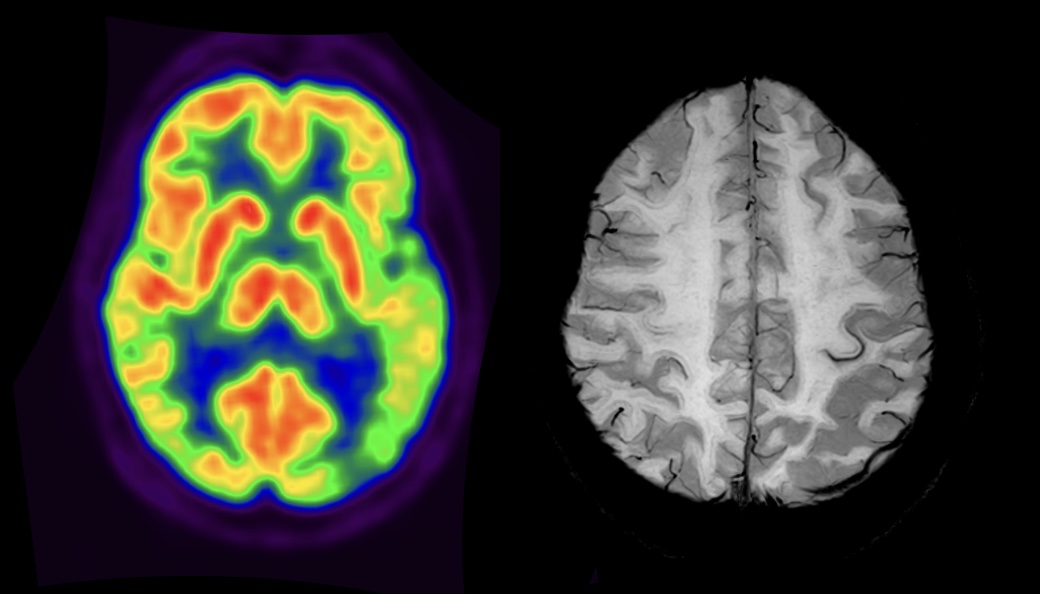Category: Genetics (Non-PD)
Objective: To describe a novel case of OPTN multiexon deletion causing a peculiar CBS-ALS phenotype.
Background: While traditionally classified as distinct clinical entities, corticobasal syndrome (CBS) and amyotrophic lateral sclerosis (ALS) may share common molecular mechanisms. OPTN, whose mutations are known as a rare cause of ALS, may be implicated in both, leading to an overlapping phenotype.
Method: Clinical and cognitive evaluation, NGS sequencing and CNV analysis, PET-MRI, neurophysiological tests.
Results: We describe a 56-year-old woman with a typical CBS phenotype featuring alien limb, apraxia, speech disturbances and rapid progressive asymmetric parkinsonism. PET-MRI showed asymmetric hypometabolism of temporo-parieto-frontal cortex (Fig.1A) and DAT-scan was abnormal; EMG and motor evoked potentials (MEP) were unremarkable. Two years later, in addition to cognitive decline MMSE (13.31/30), worsening of parkinsonism and severe apraxia, the patient developed upper and lower motor neuron signs, confirmed on both clinical and neurophysiology evaluations (MEP showing abnormal central motor conduction time from lower limbs and diffuse neuropathic changes in motor unit potentials associated with fibrillation and fasciculation potentials at EMG); brain MRI showed increased unilateral hemispheric atrophy and hypointense SWI signal in primary motor cortex (Fig.1B). A final diagnosis of CBS-ALS was formulated. Genetic analysis showed a novel biallelic deletion in OPTN gene ranging from exon 12 to exon 14. Her brother, who shared the same mutation, had previously been diagnosed with ALS and died at the age of 44. Literature search reported 6 cases of CBS linked to OPTN mutations, 5 of them with prominent pyramidal signs; family history was frequently positive for ALS-FTD spectrum (Table I).
Conclusion: OPTN variants can cause highly variable phenotypes and different trajectories of progression, even within the same family, and should be considered in CBS phenotype if additional pyramidal signs occur.
Data partially submitted as abstract at European Human Genetics Congress, Berlin (Germany), 2024
Fig.1
Table I
To cite this abstract in AMA style:
G. Bonato, M. Ginevrino, B. Savini, D. Ciprietti, P. Santurelli, E. Gasparoli, C. Gabelli, G. Sorarù, R. Biundo, M. Carecchio, A. Guerra, L. Salviati, A. Antonini. OPTN gene associated with corticobasal syndrome: a novel multi-exon deletion and literature review [abstract]. Mov Disord. 2024; 39 (suppl 1). https://www.mdsabstracts.org/abstract/optn-gene-associated-with-corticobasal-syndrome-a-novel-multi-exon-deletion-and-literature-review/. Accessed January 7, 2026.« Back to 2024 International Congress
MDS Abstracts - https://www.mdsabstracts.org/abstract/optn-gene-associated-with-corticobasal-syndrome-a-novel-multi-exon-deletion-and-literature-review/


